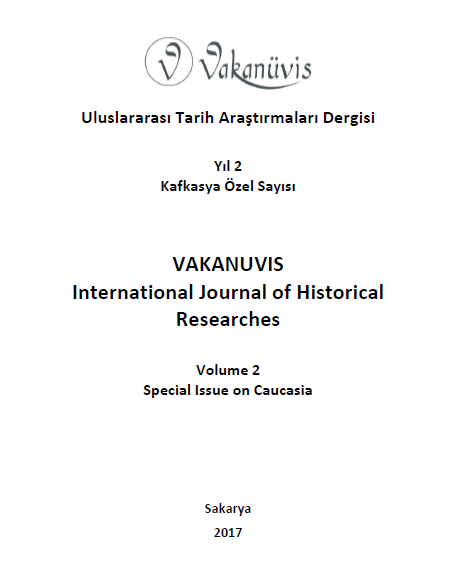XIII. Yüzyılda Güney Kafkasya’da Selçuklu İzleri: “Atabeglik Müessesesi ve Atabegler”
Seljukid Traces in South Caucasus in XIII. Century: “The Fact of Atabeg And Atabegs”
Author(s): Ömer SubaşıSubject(s): Cultural history, Regional Geography, Political history, Culture and social structure , 13th to 14th Centuries
Published by: Serkan YAZICI
Keywords: South Caucasus; Seljuk; Atabeg; Mkhargrdzeli; Mankaberdeli; Cakeli;
Summary/Abstract: Tamara is the Queen of Georgia who proposed a commander-in-chief to his brother Ivane Mkhargrdzeli after the death of Commander-in-Chief Zakaria Mkhargrdzeli. According to the proposal, Ivane requested that the title of Atabeg, which is a Seljuk heritage from the Queen and used almost entirely in the region, should be given to him. The Queen surprised at the request of this title which was not found in the history of Georgia until that day, finally accepted to give Ivane the title of Atabeg. From this day forth, Ivane has his name rather frequently mentioned, and his title will continue its existence by passing from father to son, has begun to show up in the political life of South the Caucasus. After the death of Atabeg Avak, member of the Mkhargrdzeli dynasty, representatives of the Atabeg institution in the South Caucasus became members of the Mankaberdeli family. Towards the end of the XIII. Century, the fact of Atabeg which falls into silence, as from the beginning of XIV. century, Atabeg under the management of the Cakeli family began to be used in the country. In this research is given the period that they are aware of the resources will be analyzed the importance and the struggle for existence in the South Caucasus political life which is one of the indispensable titles of the Seljuk State structure.
Journal: Vakanüvis- Uluslararası Tarih Araştırmaları Dergisi
- Issue Year: 2/2017
- Issue No: Spec.issue
- Page Range: 507-537
- Page Count: 31
- Language: Turkish

